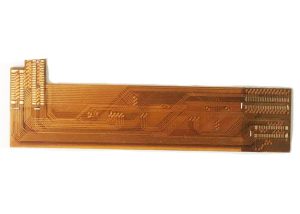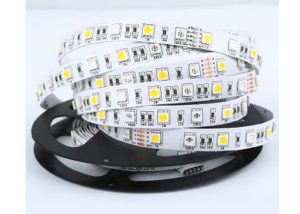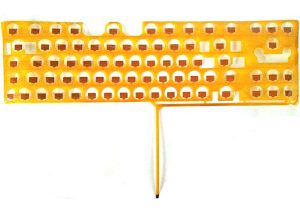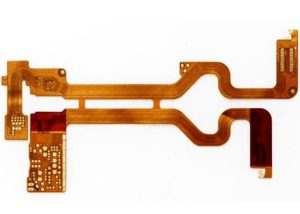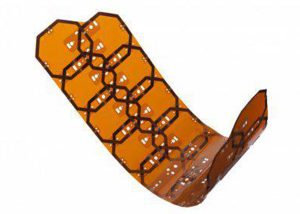Flexible PCB
Hitech Circuits Co.,Ltd is a professional flexible pcb, FPC printed circuit board manufacturer, supplier from China, due to its features of bendable, reducing product size, good heat dissipation and solderability, easy assembly and low overall cost etc, flexible pcb is widely used in mobile phones, wearable smart devices, automobiles, medical treatment, and industrial control etc. If you are looking for a reliable flexible PCB board partner in China, please don’t hesitate to contact [email protected] .
What is a flexible PCB board
Flexible PCB circuit board, also called soft board, FPC board, is a kind of pcb, with excellent flexibility. FPC circuit board can complete the overall wiring work on one machine, which can be expanded and moved arbitrarily according to the space layout requirements, reduces the wiring volume, realizes the integration of component assembly and wire connection, and promotes electronic products to be smaller, lighter and thiner.
FPC flexible circuit board is made of polyester film or polyester imide, which is light and thin, high density, high flexibility, bendable and foldable, and has advantages that other types of circuit boards do not have. Compared with traditional interconnection technology, FPC flexible circuit boards can withstand millions of bending times, are easy to install, and have good heat dissipation, which are favored by the market.
Advantages of flexible PCB boards
Flexible PCB boards are printed circuits made of flexible insulating substrates, and have many advantages that rigid PCB boards do not have:
1. It can be bent, wound, and folded freely, can be arbitrarily arranged according to the space layout requirements, and can be moved and expanded in three-dimensional space, so as to achieve the integration of component assembly and wire connection;
2. The use of FPC board can greatly reduce the volume and weight of electronic products, which is suitable for the development of electronic products in the direction of high density, miniaturization and high reliability. Therefore, FPC has been widely used in aerospace, military, mobile communications, laptop computers, computer peripherals, PDAs, digital cameras and other fields or products;
3. Flexible pcb board also has the advantages of good heat dissipation and solderability, easy assembly and low overall cost, etc. The design of Rigid-flex PCB also makes up for the slight deficiency of the flexible substrate in the component carrying capacity to a certain extent.
Disadvantages of flexible PCB boards
1. High one-time initial cost: Since the flexible PCB is designed and manufactured for special applications, the initial circuit design, wiring and photographic masters require higher costs. Unless there is a special need to apply a flexible PCB, it is usually better not to use it in a small amount of application;
2. It is difficult to change and repair the flexible PCB: once the flexible PCB is made, it must be changed from the base map or the programmed light drawing program, so it is not easy to change. The surface is covered with a protective film, which must be removed before repair and restored after repair, which is a relatively difficult task;
3. Size is restricted: Flexible PCBs are usually manufactured by batch method when it is not yet common. Therefore, due to the size of production equipment, they cannot be made very long and wide;
4. Improper operation may easily cause damage: Improper operation by the installation and connection personnel can easily cause damage to the flexible circuit, and its soldering and rework need to be operated by trained personnel.
How to design a flexible PCB board
When designing a flexible circuit, it is important to understand the specific application of the flexible PCB board. Can it be used in a static or dynamic environment ? If the FPC board is to be placed in a static environment with little movement, the circuit design needs to have appropriate flexibility so that it can be easily installed in the product. Or, if the board is to be placed in a dynamic environment (in which the board will continuously bend back and forth), the flexibility to withstand continuous motion needs to be considered in the design.
Unlike rigid circuit boards, flexible PCB boards have many variations, so it is very important to have detailed manufacturing drawings to accompany the design. The manufacturing drawing should mark all details, so the manufacturer should not ignore it. The worst thing is to let the manufacturer take care of your requirements. Flexible circuits have many moving variables, so details are very important.
How to solder the flexible PCB board?
- Before soldering, apply flux to the pad and treat it with a soldering iron to avoid poor tin plating or oxidation of the pad, resulting in poor soldering. Generally, the chip does not need to be processed.
- Use tweezers to carefully place the PQFP chip on the PCB board, taking care not to damage the pins. Make it aligned with the pad and ensure that the chip is placed in the correct direction. Adjust the temperature of the soldering iron to more than 300 degrees Celsius, dip a small amount of solder on the tip of the soldering iron, press down the aligned chip with a tool, and add a small amount of solder to the two diagonal pins. Hold down the chip and solder the pins on the two diagonal positions to make the chip fixed and unable to move. After soldering the opposite corners, recheck the alignment of the chip position. If necessary, adjust or remove and realign the position on the PCB board.
- When starting to solder all the pins, add solder to the tip of the soldering iron, and apply flux to all the pins to keep the pins moist. Touch the end of each pin of the chip with the tip of a soldering iron until you see the solder flowing into the pin. When soldering, keep the tip of the soldering iron parallel to the soldered pin to prevent overlap due to excessive soldering.
- After soldering all the pins, wet all the pins with flux to clean the solder. Suck off the excess solder where needed to eliminate any short circuits and overlaps. Finally, use tweezers to check whether there is any false soldering. After the inspection is completed, remove the solder from the circuit board, and soak the hard brush with alcohol and wipe it carefully along the pin direction until the solder disappears.
- SMD resistance-capacitance components are relatively easy to solder. You can put tin on a solder joint first, then put one end of the component, clamp the component with tweezers, and then see if it is placed correctly after soldering one end; If it has been aligned, then solder the other end.
What is the difference between flexible PCB board, rigid PCB board and rigid-flex PCB board?
Flexible PCB boards play an important role in the lead-free operation, but they are currently costly, but they are slowly reducing costs. Generally speaking, flexible PCB boards are indeed more expensive and costly than rigid PCB boards. When manufacturing flexible PCB boards, in many cases have to face the fact that many parameters are outside the tolerance range. The difficulty in manufacturing flexible PCB board lies in the flexibility of the materials.
The rigid-flex board has the characteristics of FPC board and rigid PCB board at the same time. Therefore, it can be used in some products with special requirements. It has both a certain flexible area and a certain rigid area, which can save the internal space of the product. It is a great help for reducing the volume of the finished product and improving the performance of the product. It is commonly used in mobile phones.
However, there are many production processes for the rigid-flex PCB board, the production is difficult, the yield rate is low, and more materials and manpower are used. Therefore, its price is relatively expensive and the production cycle is relatively long.
The production process of flexible PCB boards
Prodution process of double sided flexible PCB boards:
Cutting → Drilling → PTH → Electroplating → Pre-processing → Dry Film Pasting → Alignment → Exposure → Development → Graphic Plating → Stripping → Pre-processing → Dry Film Application → Alignment Exposure → Development → Etching → Stripping → Surface Treatment → Paste the cover film → Press → Curing → Immersion nickel gold → Printing characters → Cutting → Electrical test → Punching → Final inspection → Packaging → Shipment.
Prodution process of single sided flexible PCB boards:
Cutting → Drilling → Pasting Dry Film → Aligning → Exposure → Developing → Etching → Stripping → Surface Treatment → Covering Film → Pressing → Curing → Surface Treatment → Immersion Nickel Gold → Printing Characters → Cutting → Electrical Measurement → Punching Cutting → final inspection → Packaging → Shipment.
Application of FPC flexible circuit board
FPC flexible circuit boards account for a large proportion of applications in smart phones, which can meet the needs of mobile phone screens, batteries, and camera modules. In the 5G era, the emergence of multifunctional smart phone modules, radio frequency modules, folding screens, and miniaturized models are inseparable from the connection of FPC flexible circuit boards. Therefore, in the development of smart phones, the amount of FPC flexible circuit boards is also constantly improving.
With the development trend of miniaturization of smart terminals, FPC flexible circuit boards are light and flexible, making them more and more important during manufacturing of smart wearable devices. As one of the main materials of smart wearable devices, FPC flexible circuit boards have a broad market development space. It is expected to continue to rise in the future and become a beneficiary of the development of smart wearable devices.
In addition to consumer electronic products, the application of FPC flexible circuit boards also covers many fields such as automobiles, medical treatment, and industrial control, and the application prospects are very broad.
FAQs for HiTech Circuits – Flexible PCBs
1. Can HiTech Circuits customize Flexible PCBs?
Absolutely! We specialize in custom Flexible PCB solutions tailored to meet your exact specifications. Our team works closely with clients to design and manufacture PCBs that fit perfectly within their desired application, considering factors like flexibility, conductivity, and durability.
2. How do I order Flexible PCBs from HiTech Circuits?
Ordering is straightforward. Visit our website, navigate to the Flexible PCB section, and fill out the quote request form with your project details. Our sales team will review your information and get back to you with a custom quote.
3. What information do I need to provide for a custom Flexible PCB quote?
Please provide detailed specifications for your project, including board dimensions, number of layers, type of materials, and any special requirements like impedance control or specific tolerances. If you have design files, including them can significantly speed up the quotation process.
4. How long does it take to manufacture and deliver Flexible PCBs?
Manufacturing times can vary depending on the complexity and quantity of your order. Typically, production times range from a few days to several weeks. Delivery times will depend on your location and the shipping method chosen. Our team strives to meet your deadlines with efficiency and precision.
5. Are there any design tips for Flexible PCBs?
Yes, when designing Flexible PCBs, consider using flexible design rules, minimizing via usage, and planning for bending areas to avoid component placement that might stress the board. It’s also important to choose materials appropriate for your application’s flexibility and durability requirements.
6. How does HiTech Circuits ensure the quality of Flexible PCBs?
We adhere to strict quality control standards throughout the manufacturing process, from material selection to final inspection. Our facilities are equipped with advanced testing equipment to ensure each PCB meets our high-quality standards and your specifications.

